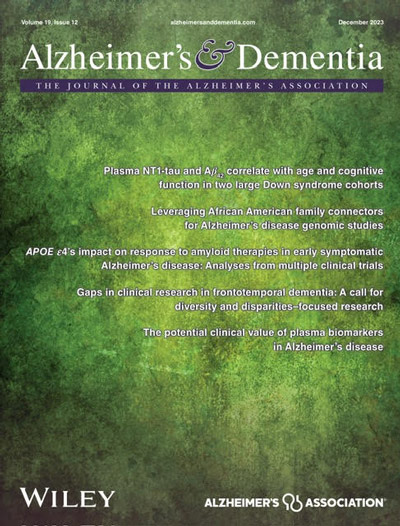Combining Lumipulse p-tau217 and Aβ42/40 as confirmatory tests for Aβ positivity prior to disease-modifying therapy
Abstract
INTRODUCTION
For a blood-based biomarker to be considered a confirmatory test for the detection of abnormal amyloid beta (Aβ) levels, the sensitivity and specificity must be equivalent to that of current cerebrospinal fluid tests.
METHODS
In the current study we assessed the ability of phosphorylated tau (p-tau)217 and Aβ42/40 from the Lumipulse G p-tau217 and β-amyloid ratio (1-42/1-40) tests, individually and combined, to predict Aβ positron emission tomography status in two sub-cohorts from the Australian Imaging, Biomarkers, and Lifestyle Study of Ageing.
RESULTS
Testing an Alzheimer's disease continuum cohort, the area under the curve (AUC), sensitivity, specificity, and accuracy for the p-tau217/Aβ42 ratio reached 0.961, 93%, 92%, and 93%, respectively. Validation in an intention-to-treat cohort demonstrated similar AUC (0.959), with increased sensitivity (99%), decreased specificity (87%), and increased accuracy (95%). Dual cut-offs generating balanced 95% sensitivity/specificity result in 93% accuracy.
DISCUSSION
Combinations of plasma p-tau217 and Aβ42 demonstrate recommended performance, confirming the presence of Aβ positivity prior to selection for disease-modifying therapies.
Highlights
- The phosphorylated tau (p-tau)217/amyloid beta (Aβ)42 ratio had high performance to detect Aβ positron emission tomography (PET) status, with > 90% sensitivity, specificity, and accuracy.
- p-tau217/Aβ42 ratio dual cut-offs set at 95% sensitivity and specificity found 10% to 15% of participants in the intermediate zone.
- Cut-offs derived for the intention-to-treat cohort meet confirmatory assay criteria for a disease-modifying therapy and can be used in clinical settings.





 求助内容:
求助内容: 应助结果提醒方式:
应助结果提醒方式:


